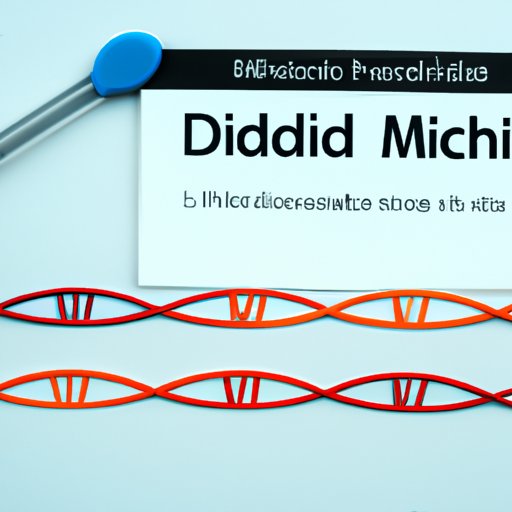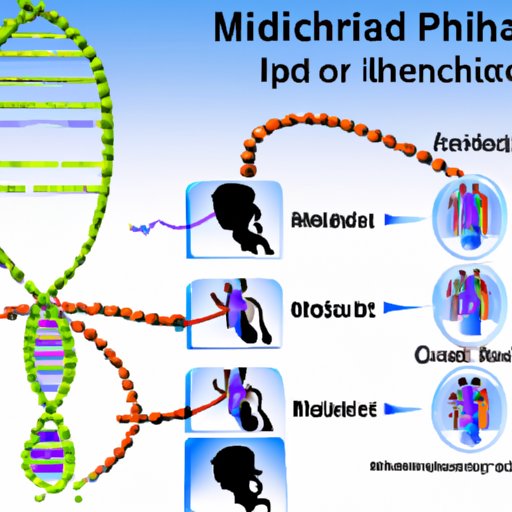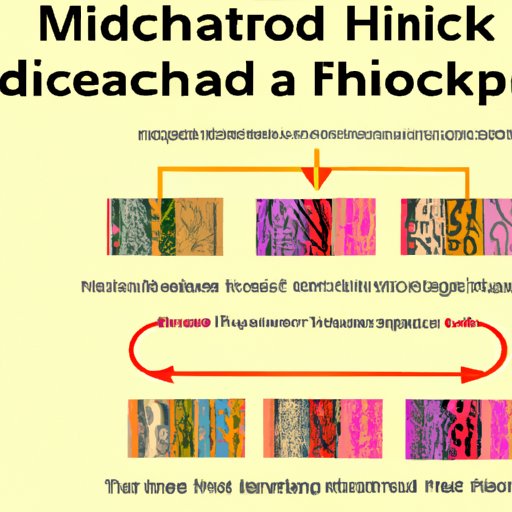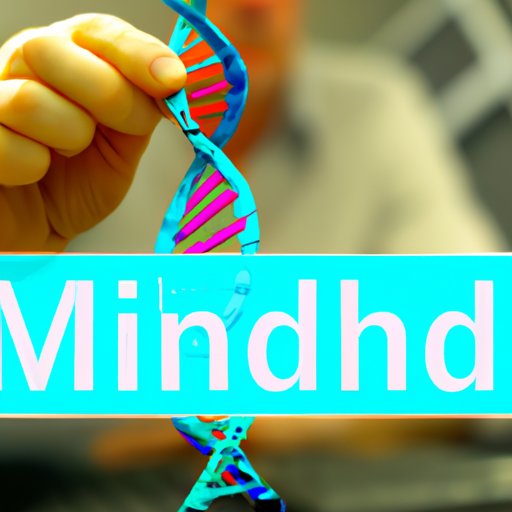Introduction
Mitochondrial DNA (mtDNA) is a type of DNA found in mitochondria, which are structures located within cells that generate energy for the cell. Although mtDNA is inherited from both parents, it is only passed down from the mother, making it unique among the other types of DNA. Over the years, mtDNA has become an important tool for scientists in many different fields of research. This article will explore how mtDNA is used in scientific research, with a focus on its role in disease diagnosis, uncovering mysteries of human health, and tracing human ancestry.

Exploring the Role of Mitochondrial DNA in Scientific Research
What is Mitochondrial DNA? MtDNA is a circular strand of DNA that is much smaller than other types of DNA, such as nuclear DNA. It contains 37 genes, all of which are involved in the production of energy. Unlike nuclear DNA, which is inherited from both parents, mtDNA is only passed down from the mother. This makes mtDNA useful for tracing maternal lineages, as well as for understanding evolutionary relationships between species.
How is Mitochondrial DNA Used in Science? MtDNA has been used in a variety of scientific research efforts over the years. It has been used to study the evolutionary relationships between species, as well as to trace the maternal lineage of humans and other organisms. It has also been used to study the effects of genetic mutations and to identify individuals who may be at risk for certain diseases. In addition, mtDNA has been used to study the impacts of environmental factors on genetic expression.
Investigating the Potential of Mitochondrial DNA for Disease Diagnosis
How Can Mitochondrial DNA be Used to Diagnose Disease? Scientists have long been interested in the potential of mtDNA to diagnose diseases. By analyzing mtDNA, researchers can identify genetic mutations that may be associated with certain diseases. These mutations can then be used to diagnose or predict the likelihood of developing certain diseases. For example, a recent study published in the journal Genetics in Medicine identified a mutation in mtDNA that was linked to an increased risk of Parkinson’s disease.
What are the Benefits of Utilizing Mitochondrial DNA for Disease Diagnosis? The use of mtDNA for disease diagnosis offers several benefits. First, mtDNA is easier to analyze than other forms of DNA, since it is much smaller. Second, since mtDNA is only passed down from the mother, it can provide more accurate information about the risk of inheriting certain diseases. Finally, studying mtDNA can provide insights into the effects of environmental factors on genetic expression, which can be used to develop better treatments for diseases.

Uncovering the Mysteries of Mitochondrial DNA in Human Health
What is the Relationship Between Mitochondrial DNA and Human Health? Mitochondrial DNA plays an important role in human health, as it is responsible for producing energy for the cell. Studies have also shown that mtDNA can be used to identify mutations that may be associated with certain diseases. This suggests that mtDNA may be a valuable tool for diagnosing and predicting the risk of developing certain diseases.
What New Discoveries are Being Made Through the Study of Mitochondrial DNA? Recent studies have revealed new insights into the relationship between mtDNA and human health. For example, a study published in the journal Nature Communications identified a mutation in mtDNA that was linked to an increased risk of developing Alzheimer’s disease. This discovery could lead to the development of new treatments and therapies for the disease.

Utilizing Mitochondrial DNA to Trace Human Ancestry
What is the Role of Mitochondrial DNA in Tracing Human Ancestry? Since mtDNA is only passed down from the mother, it is a powerful tool for tracing maternal lineages. By analyzing mtDNA, researchers can identify mutations that are shared between individuals, which can be used to trace family histories and determine ancestral links.
What are the Benefits of Using Mitochondrial DNA to Trace Family Histories? The use of mtDNA for tracing family histories offers several benefits. First, since mtDNA is only passed down from the mother, it can provide more accurate information about a person’s ancestry. Second, mtDNA can help to identify individuals who may be related through their maternal lineages. Finally, mtDNA can be used to trace the migration patterns of ancient populations, which can provide valuable insights into the history of human populations.
Conclusion
In conclusion, this article has explored the role of mitochondrial DNA in scientific research. It has discussed the potential of mtDNA for disease diagnosis and uncovering mysteries about human health. It has also examined the use of mtDNA to trace human ancestry. Through these discussions, it has become clear that mtDNA is a powerful tool for researchers in many different fields. As research continues to explore the potential of mtDNA, we can expect to see even more discoveries being made in the future.
Summary of Key Points: This article explored how mitochondrial DNA is used in science, with a focus on its role in disease diagnosis, uncovering mysteries of human health, and tracing human ancestry. It discussed the potential of mtDNA for disease diagnosis and identified new discoveries being made through the study of mtDNA. Finally, it examined the use of mtDNA to trace human ancestry and highlighted the benefits of using mtDNA for this purpose.
Implications for Future Research: Future research should continue to explore the potential of mtDNA for disease diagnosis and uncovering mysteries about human health. In addition, further research should be conducted to investigate the role of mtDNA in tracing human ancestry and identifying shared mutations between individuals. With these efforts, we can expect to make even more discoveries about the role of mtDNA in science.
(Note: Is this article not meeting your expectations? Do you have knowledge or insights to share? Unlock new opportunities and expand your reach by joining our authors team. Click Registration to join us and share your expertise with our readers.)
